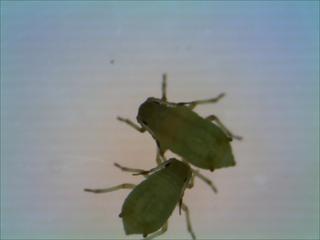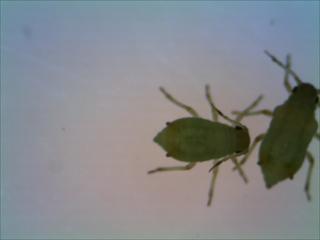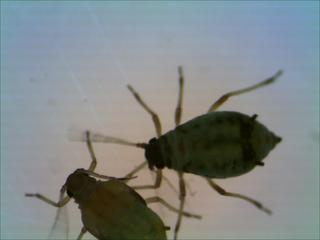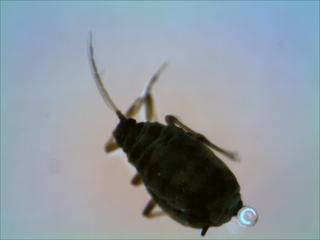So the weekend is upon us, summer is already beginning to slip away, and aphid abundance is on the rise.
Mine and Lauren’s aphid specialization experiment is still being tweaked to perfection. We set up 5 preliminary aphid transfers on B genotype plants (the offspring of between site echinacea crosses) in order to practice appropriate aphid transfer methods and make sure that we can get aphid establishment on plants that we know aphids are found on (aka to ensure that our transfer methods do not result in aphid squashing and death). This proved perhaps more difficult than expected. I single-handedly destroyed the greater part of several aphid colonies before determining that trying to remove aphids from their leafy homes with a tooth pick was just not going to work. Eventually I settled on disturbing the leaf/gently poking at one aphid (which, it turns out, causes some species of aphid to release an alarm pheromone so all the other aphids on the leaf stop sucking phloem, withdraw their stylets and start moving around). Apparently many Aphis species do not have this alarm pheromone, but when I starting messing with the aphids/the aphids’ leaf they started running around in frantic disarray, so whether or not they release a pheromone, poking them seems to work. After instigating a mass aphid exodus, I attempted to herd several confused individuals onto the flat side of a twist tie. This was also more difficult than you might expect it to be, and was rather time consuming. When we set up our actual experiment we will knock the disturbed aphids into a petri dish, which will be a much more efficient method and will probably result in a significantly less aphid mortality.
We had initially planned on using a single alate (winged) aphid as our population founder, because these are the individuals that would colonize new plants. However, this particular aphid morphology is not nearly as common as the apterous aphids (lacking wings). After conferring with Dave Andow, an entomologist from the U of M, we determined that using apterous aphids is fine, as we are testing plant suitability rather than aphid preference (ie CAN aphids colonize a certain plant, not which plant would a aphid PREFER. And anyway, preference will probably manifest itself somewhat in the form of population success and growth rate). We also discussed the important question of one founder aphid or two. If we can have lots of replicates we could have only one founder. If we are worried about aphid success rate and have fewer replicates, Dave suggested that we have two founders and just record whether one or both birth their aphid babies within the first one or two days of the experiment. Dear readers: Comments or suggestions about aphid founders are encouraged!
One problem: whatever sort of aphid we use, we need to introduce gravid ones to our plants or there will be no population growth whatsoever and our experiment will fail epically. Thus it is now necessary for Lauren and I to be able to identify gravid aphids. Hmm. Apparently this is possible, and this is something we are going to have to figure out before our actual experiment can start. Again: comments or suggestion are encouraged!
I think that covers most of the updates in the glorious and exciting world of me, Lauren, and aphids.
Over and out!
-Hillary





